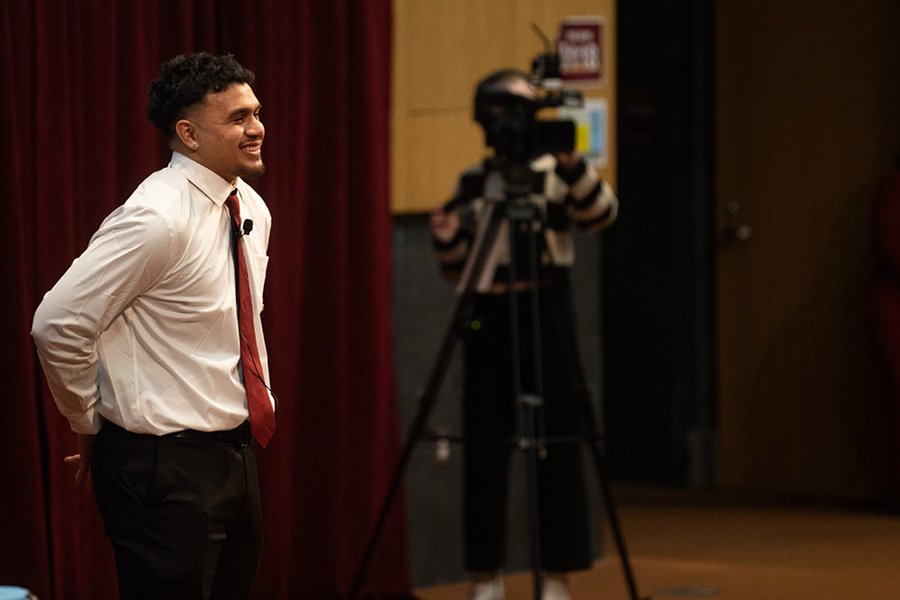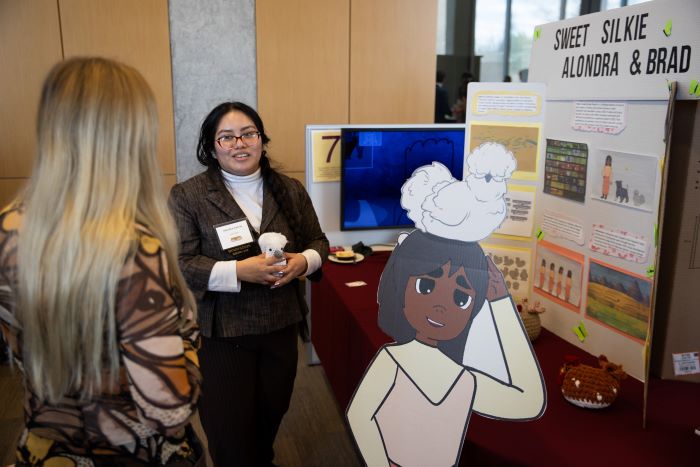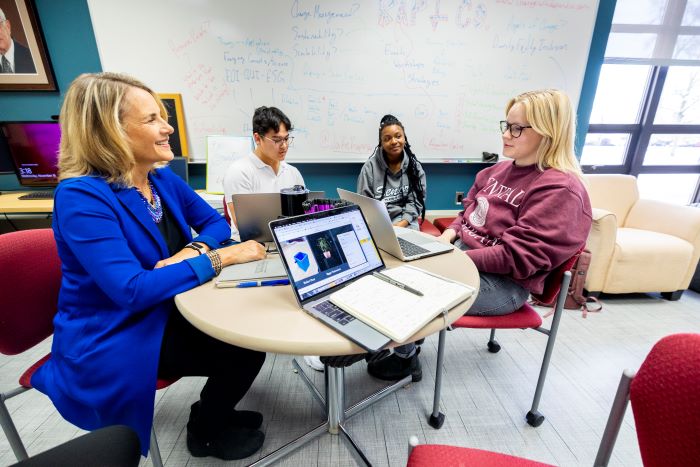
Start up
Passion. Potential. Pitches. Don't miss any of the 2025 New Venture Challenge excitement.
Tune in Friday, April 11 at 1 p.m. for great ideas and fierce competition. Then, join the judges, mentors, spectators and teams as they see who is going home with thousands of dollars in venture financing. The awards broadcast begins at 6:30 p.m. and one team will walk away as the overall best venture.
Central Michigan University’s College of Business Administration is the home of the Isabella Bank Institute for Entrepreneurship and the first Department of Entrepreneurship in the state of Michigan. We are a student-centric hub where experiential, curricular, and external entrepreneurial opportunities intersect.
Our mission is to maximize student success by fostering a campus-wide entrepreneurial mindset that promotes inter-disciplinary collaboration and the creation of new ventures.
We aim to create innovative programming, boost cross-campus and ecosystem collaboration and provide a comprehensive mentoring program.
Our institute provides extracurricular opportunities and is open to all undergraduate and graduate CMU students.
Are you interested in becoming an entrepreneur?
Every journey is unique. Explore the opportunities that interest you.
The Northern Lights, known more technically as the Aurora Borealis, are a spectacular sight in the night sky. While typically visible only in the far north, occasionally they are strong enough that you can see them in mid-Michigan.
Aaron LaCluyzé is a member of Central Michigan University’s physics faculty. He shared his expertise on what causes the Northern Lights and whether you can expect more opportunities to see them in the next year.
The Northern Lights, the glowing, shimmering colors in the nighttime sky, happen because energetic particles streaming off of the Sun interact with the upper atmosphere of Earth. Charged particles stream off the Sun constantly and make up what astronomers call the “solar wind.” The Sun is about 93 million miles from Earth, but these particles are travelling at tens of millions of miles per hour, so they arrive just a few days after leaving the Sun.
When these particles arrive at Earth, they are mostly deflected around the us by the Earth’s magnetic field and continue onward away from the Sun. Some of those particles are instead caught up in our magnetic field and driven towards the north and south poles where they slam into the upper atmosphere. When this happens, the gasses that make up the atmosphere are struck by these fast-moving energetic particles causing a glow, similar to how a fluorescent light bulb works. The colors that you see in the aurora are due to the different kinds of gasses that make up our atmosphere; reds are typically from oxygen, greens come from oxygen or nitrogen, etc. The exact reactions can get a bit complicated, so I am simplifying a bit here, but hopefully that explains the general idea.
The aurora themselves are not dangerous to people or animals, but the charged particles from space that cause the aurora can be problematic for the electronics systems on satellites and high-flying aircraft. Most passenger aircraft don’t fly high enough for it to be a problem and most satellites are hardened against all but the most energetic hits, so it isn’t normally a problem. That being said, if the Sun were to have an exceptionally large outburst it might even affect some of the electrical grid or our computer infrastructure. This is why it is so important for scientists to continue to study the Sun and the aurora.
Typically, the solar wind is relatively calm so resulting light show is only visible if you happen to live quite far north or south on the globe. The Sun does go through cycles where it is more or less active over time, so the resulting solar wind, and therefore the aurora, can be stronger or weaker. The Sun is currently in a very active state, so the solar wind is stronger right now. When this happens, the aurora can be much brighter and may be visible much further south than normal. During an exceptional auroral display they may be visible as far south as Texas, but this is very uncommon. Here in Michigan, we are just slightly too far south for aurora to extremely common, but when the Sun is as active as it is now, our chances of seeing them are greatly increased.
The solar cycle lasts about 11 years, and we are currently nearing a peak of solar activity. This cycle isn’t perfectly regular, so while the next peak was initially expected around 2025, based on the Sun’s activity it may peak a bit sooner than that, likely sometime in 2024 with decreasing activity for the next several years after that.
But keep in mind that the Sun can be very unpredictable! Even after we pass the peak of activity, the Sun might have a sudden outburst leading to increased aurora. It is always a good idea to keep an eye on the sky to the north any time you have a clear night away from city lights, but you can also check out some online sites like the NOAA Aurora Dashboard or Spaceweather if you want to increase your chances of seeing aurora for yourself.
About Aaron LaCluyzé


Explore special opportunities to learn new skills and travel the world.

Present your venture and win BIG at the New Venture Challenge.

Boost your entrepreneurial skills through our workshops, mentor meetups and pitch competitions.

Learn about the entrepreneurship makerspace on campus in Grawn Hall.

Present a 2-minute pitch at the Make-A-Pitch Competition and you could win prizes and bragging rights!

Connect with mentors and faculty who are here to support the next generation of CMU entrepreneurs.

Are you a CMU alum looking to support CMU student entrepreneurs? Learn how you can support or donate to the Entrepreneurship Institute.